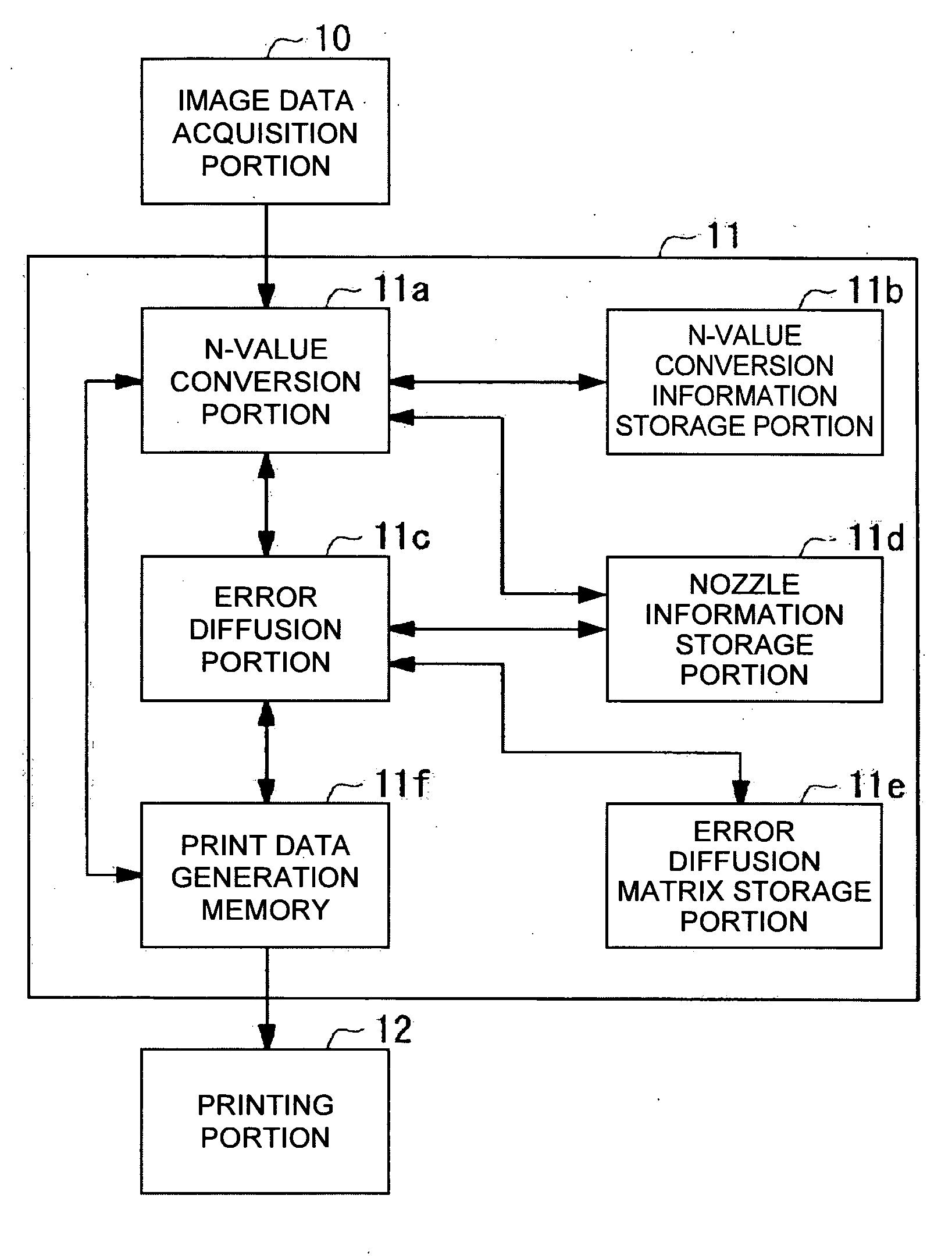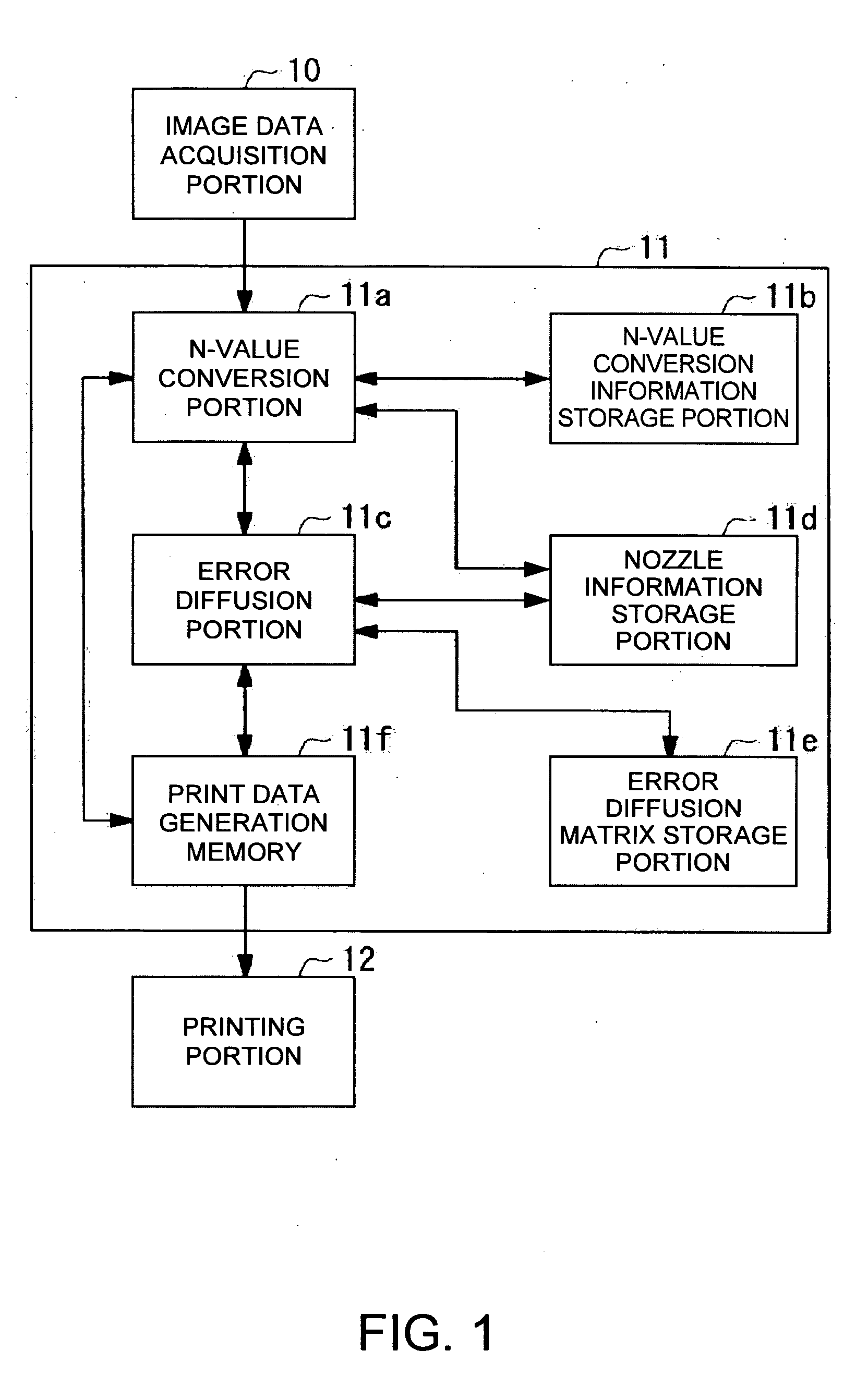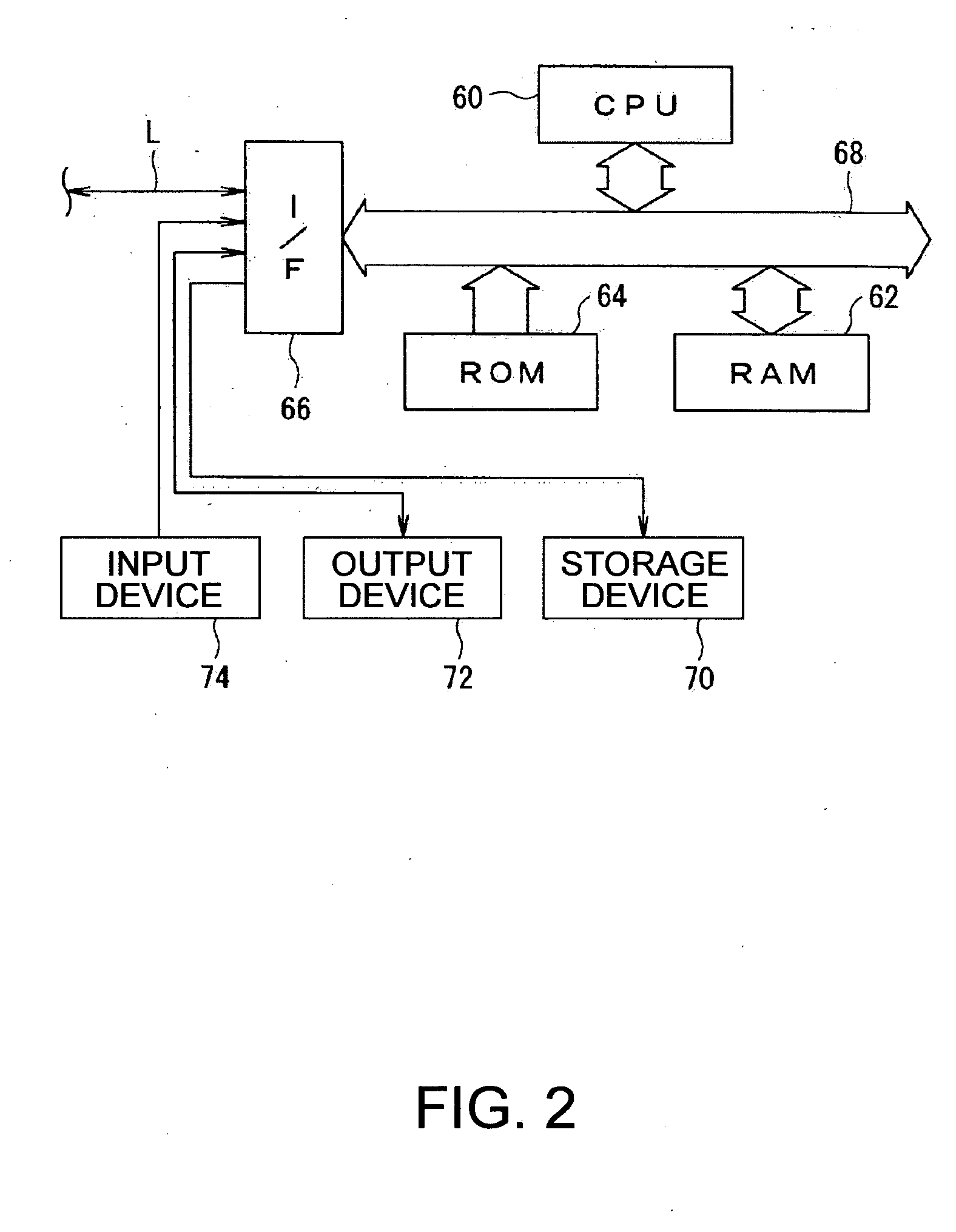Printing device, printing device control program, printing device control method, print data generation device, print data generation program, and print data generation method
a printing device and control program technology, applied in the direction of instruments, visual presentations, computing, etc., can solve the problems of deteriorating printing quality, too large or too small ink quantity in comparison with ideal quantity, and printing takes a considerable long time in comparison with a printing device adopting another method
- Summary
- Abstract
- Description
- Claims
- Application Information
AI Technical Summary
Benefits of technology
Problems solved by technology
Method used
Image
Examples
first embodiment
[0168] Hereinafter, a first embodiment of the invention will be described with reference to the accompanying drawings. FIG. 1 through FIG. 14 are views showing the first embodiment of a printing device, a printing device control program, a printing device control method, a print data generation device, a print data generation program, and a print data generation method of the invention.
[0169] Firstly, the configuration of a printing device 100 of the invention will be described with reference to FIG. 1. FIG. 1 is a block diagram showing the configuration of the printing device 100 of the invention.
[0170] The printing device 100 is a line-head printing device. As is shown in FIG. 1, it comprises an image data acquisition portion 10 that acquires M-value (M≧3) image data from an external device or a storage medium, a print data generation portion 11 that generates print data used for a printing portion 12 described below to print an image of the image data on a print medium (for exa...
second embodiment
[0246] A second embodiment of the invention will now be described with reference to the accompanying drawings. FIG. 15 is a view showing the second embodiment of the printing device, the printing device control program, the printing device control method, the print data generation device, the print data generation program, and the print data generation method of the invention.
[0247] The configurations of the printing device and the computer system of the second embodiment are the same as their counterparts of the first embodiment shown in FIG. 1 and FIG. 2, respectively. In the second embodiment, the print data generation processing performed in Step S106 in FIG. 5 of the first embodiment is replaced with the one in FIG. 15.
[0248] The generation principle underlying the print data generation processing of FIG. 15 is the same as the one in the first embodiment except that the selected pixel data corresponding to a nozzle having an ink ejection failure is not converted to an N value...
PUM
 Login to View More
Login to View More Abstract
Description
Claims
Application Information
 Login to View More
Login to View More - R&D
- Intellectual Property
- Life Sciences
- Materials
- Tech Scout
- Unparalleled Data Quality
- Higher Quality Content
- 60% Fewer Hallucinations
Browse by: Latest US Patents, China's latest patents, Technical Efficacy Thesaurus, Application Domain, Technology Topic, Popular Technical Reports.
© 2025 PatSnap. All rights reserved.Legal|Privacy policy|Modern Slavery Act Transparency Statement|Sitemap|About US| Contact US: help@patsnap.com



